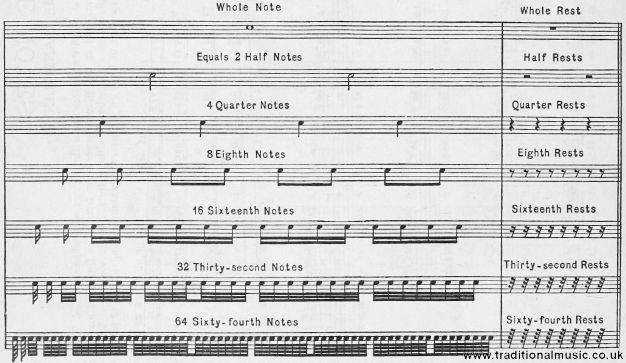Mandolin Self Instructor, online tutorial - Page 10
A simplified self learning system for the Mandolin with tuning instruction, song folio, chord diagrams, sheet music and PDF for printing. By ZARH MYRON BICKFORD
| Share page | Visit Us On FB |
|
NOTATION AND THE STAFF |
||
|
Musical tones are represented by characters called NOTES. These are written on and between the five parallel lines comprising the STAFF, and, when necessary, on added, or LEDGER lines or spaces above and below the regular staff. The following example shows the staff with the DEGREES (as the lines and spaces are called) marked. |
||
 |
||
 |
||
 |
||
|
The lowest G shown above represents the lowest note it is possible to play on the mandolin, the high E representing
the other extreme. The duration of a musical tone is indicated by the form or shape of the note used to represent it, the different forms
being known as whole, half quarter, eighth sixteenth, thirty-second and sixty-fourth notes. Since it is occasionally necessary to have pauses or periods of silence during the course of musical compositions,
each of the above named notes has a REST, exactly corresponding to it in value. The following table shows the forms of the various notes and rests, together with their values as related to each other. The actual value (in seconds), of any given note is always dependent upon the character of the music and the speed with which it is played, but the relative value, as compared to other notes of a different denomination and occurring in the same piece, never changes. |
||
 |
||